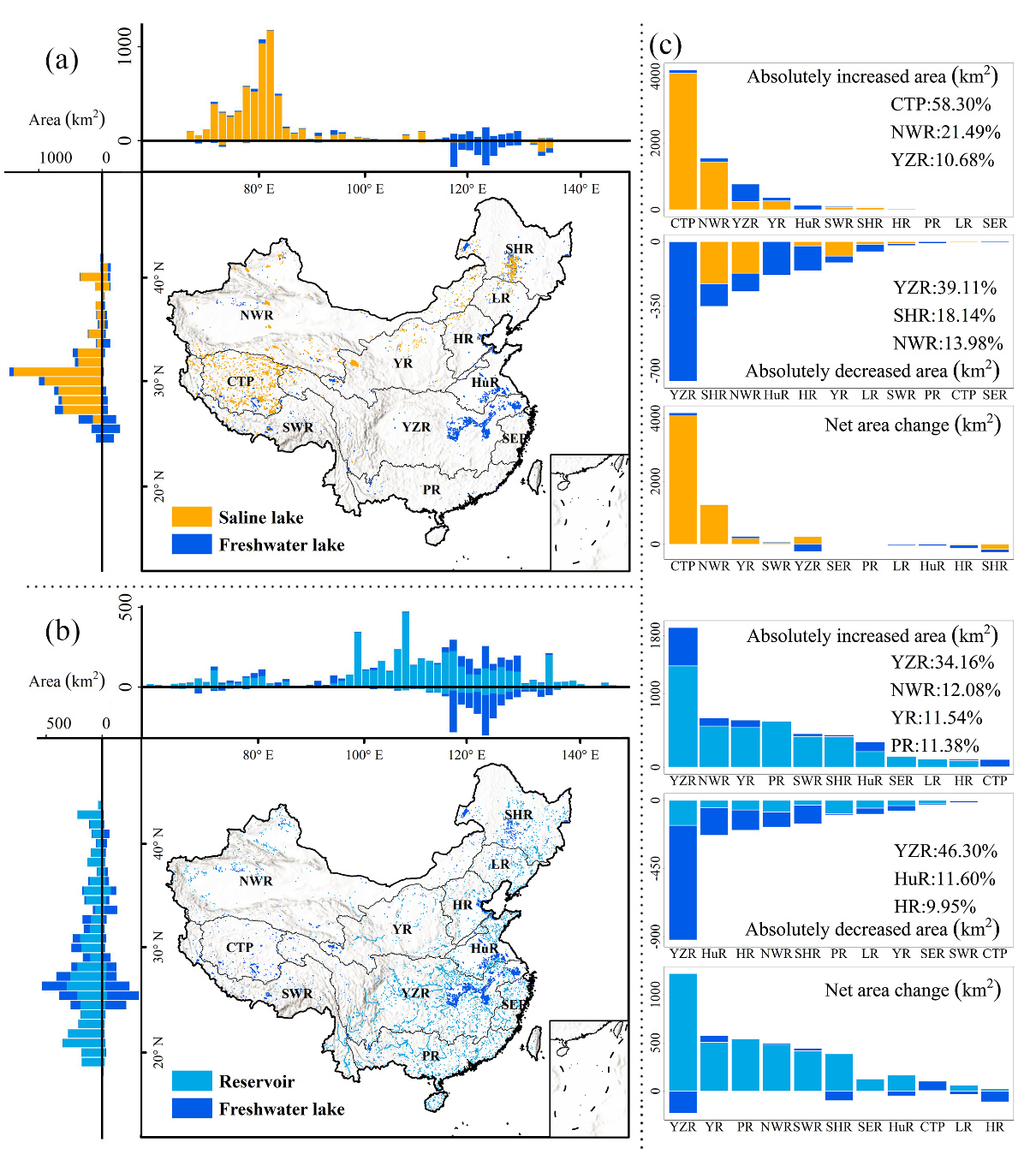China's inland water dynamics: The significance of water body types
The recent paper by Feng et al. analyzes the changes of China’s inland water bodies (WBs) between 1985-1999 and 2000-2015 based on the Global Surface Water Dataset (GSWD). They quantify the area and number of changes of WBs in different hydrological regions of China, and discuss the possible driving factors. Although this study provides a synoptic view of China’s WB dynamics at basin scales, we here convey a caveat that their basin-scale statistics aggregate the changes in various types of WBs, and, consequently, mask divergent changing patterns among the WB types that are critical for attributing causality.
An explicit consideration of WB types is essential for understanding large-scale water dynamics. This is especially true for China, a vastly diverse country that descends from the “Roof of the World” to coastal deltas, and is a global hotspot of booming dam construction. In such a complex setting, WB types provide indispensable insight on sorting out water change mechanisms. To elucidate our point, we categorized China’s WBs larger than 1 km2 (~123,150 km2) into saline lakes (42%), freshwater lakes (35%), and artificial reservoirs (23%) based on national lake/reservoir surveys, and reexplored their area changes between the two 15-y epochs using GSWD.
China at a national scale, as reported in ref. 1, owned more WB area during this century than previously. Nevertheless, the increased WB area mainly stems from a net expansion of saline lakes (5,572.0 km2) and the reservoirs (3,925.8 km2). In contrast, China’s natural freshwater lakes underwent a net shrinkage of 324.8 km2. Most of the expanded saline lakes are distributed in remote endorheic regions such as the Changtang Plateau, indicating a dominant contribution of climate change. The shrinkage of freshwater lakes, however, mainly occurred in densely populated regions such as the Yangtze River basin (YZR) and the Hai River basin, due to extensive impoldering and rising human water consumption. This contrast implicates an aggravated unevenness of China’s natural freshwater accessibility despite a net national WB gain.
At least 3,665 reservoirs (≥1 km2) have been added to mitigate freshwater stress in populated basins. About one-third of the newly impounded area (1,219.5 km2) occurred in the upper YZR, largely owing to the construction of monumental reservoirs such as the Three Gorges Reservoir and the Xiluodo Reservoir. Newly impounded reservoirs contribute over half of the total freshwater increase in several major basins such as YZR, the Pearl River basin, and the Yellow River basin, suggesting that human water regulation, rather than increased precipitation, was the first-order driver of the recent WB increase in China’s populated basins.
Reporting aggregated water changes, as in ref. 1, is an important initiative, but we have to ask, Can the implemented analysis better address the ultimate purposes of WB monitoring, such as understanding causations? Unequivocally, WB variations of different types are driven by different mechanisms. Without an explicit consideration of WB types, regional aggregates not only obscure a thorough attribution of the spatially variable water dynamics but may lead to misinterpreted ramifications to water resource management.

Fig 1. China's inland WBs (salt lakes, freshwater lakes, and reservoirs) and their area changes during 1985–2015.
(A) Distribution of natural freshwater and saline lakes, with 1° latitude/longitude histograms of “absolutely increased (AI) area” and “absolutely decreased (AD) area.” AI and AD areas are referred to in Feng et al., which indicates water occurrence change intensity of 100% and ?100%, respectively. Saline lakes were identified from the Second China Lake Survey.
(B) Distribution of natural freshwater lakes and artificial reservoirs, with 1° latitude/longitude histograms of AI and AD areas. Reservoirs were identified from the Global Reservoir and Dam Database and Almanac of China’s water power.
(C) WB area changes in the same 11 basins/regions as defined in Feng et al.
作者:Jingying Zhu, Chunqiao Song et al. PNAS. 2020. DOI: 10.1073/pnas.2005584117
